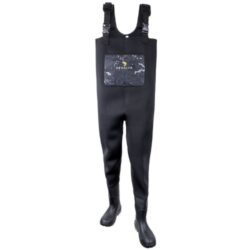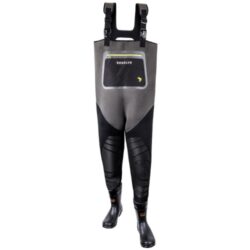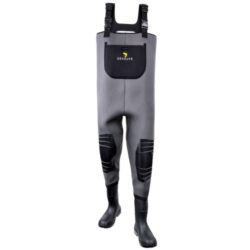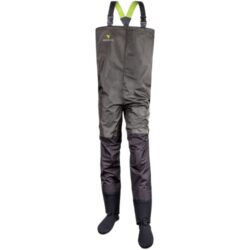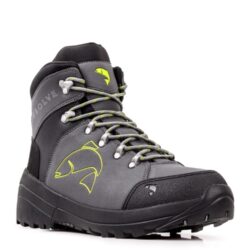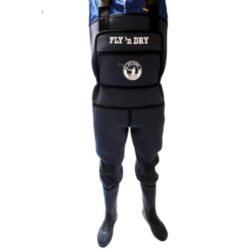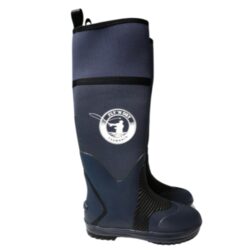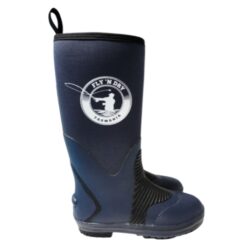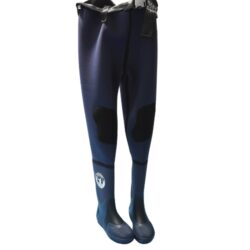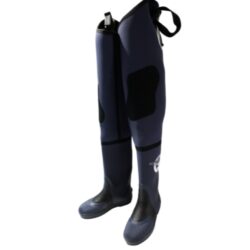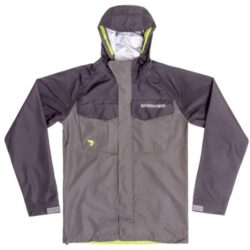Fishing Waders: Neoprene vs. Nylon – Which is Best?
When it comes to the world of fishing, having the right gear can make all the difference between a successful day on the water and a frustrating one.
One essential piece of equipment for anglers is a good pair of fishing waders. Waders not only keep you dry and comfortable while you wade into the water, but they also provide protection against the elements.
There are two main types of fishing waders that cater to different needs: neoprene and nylon. In this article, we’ll dive into the differences between these two types of waders, their pros and cons, their suitability for various situations, price considerations, and their longevity.
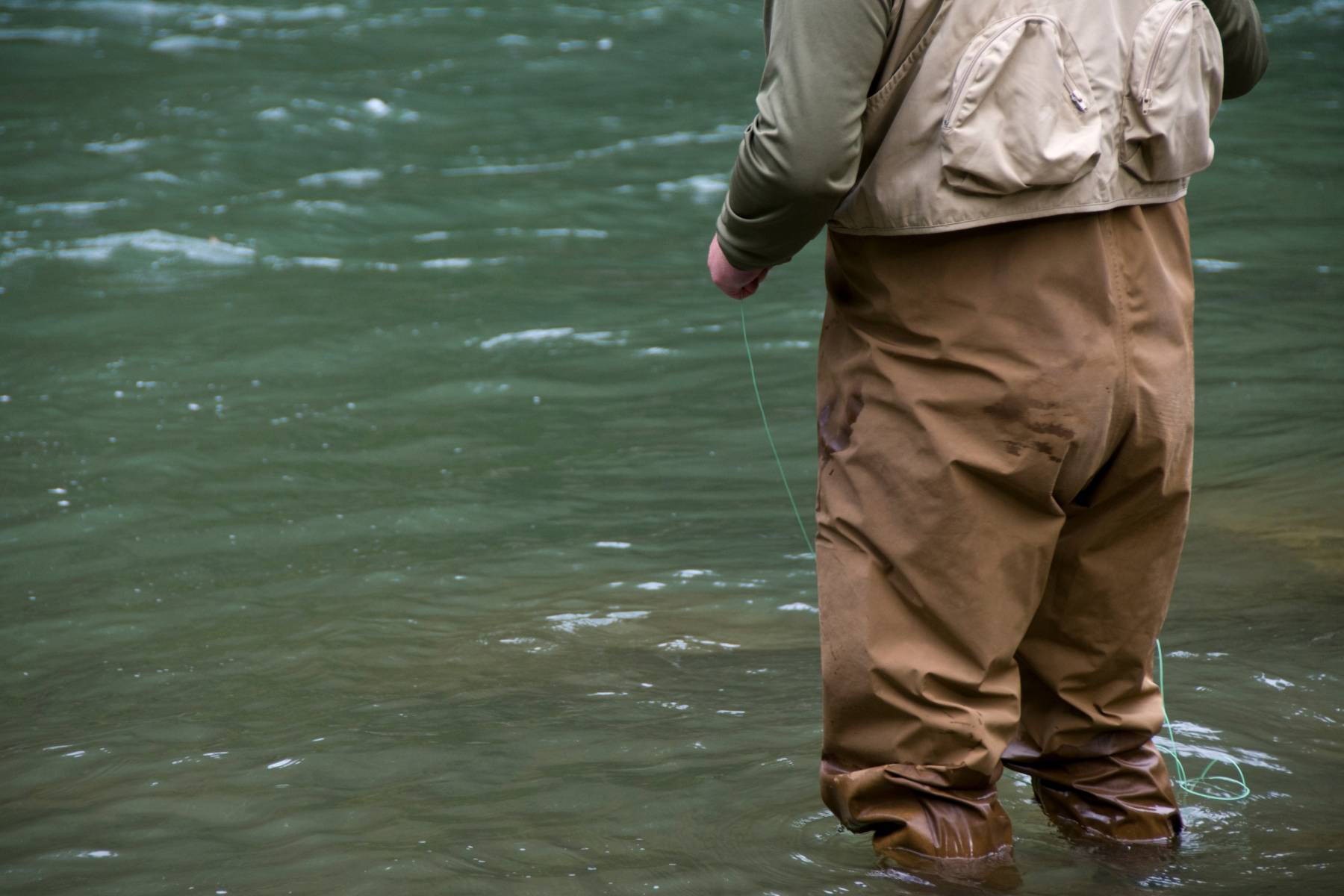
Neoprene Fishing Waders
Neoprene fishing waders are crafted from a synthetic rubber material known as neoprene. This material is highly regarded for its insulating properties, making it an excellent choice for anglers who venture out in colder waters. Neoprene waders come in various thicknesses, typically ranging from 3mm to 5mm. The thickness impacts not only the insulation provided but also the overall comfort and flexibility of the waders.
Pros of neoprene fishing waders
- Exceptional insulation: Ideal for fishing in colder conditions or during colder months.
- Durability: Neoprene waders are often more puncture-resistant compared to nylon.
- Comfort and flexibility: Conform well to the body, allowing for a snug fit and ease of movement.
Cons of neoprene fishing waders
- Bulkiness: Thicker material can be less comfortable for extended wear and in warmer weather.
- Limited breathability: May cause overheating in hotter conditions.
- Heavier weight: Can be tiring during long walks to fishing spots.
Best Suited For
- Cold weather fishing.
- Fly fishing in rivers or streams with rocky terrains.
- Situations where durability against sharp objects is essential.
Nylon Fishing Waders
Nylon fishing waders, on the other hand, are constructed using lightweight and breathable nylon materials. These waders often feature multiple layers and advanced technologies to enhance their durability and water resistance.
Pros of nylon fishing waders
- Lightweight and breathable: Ideal for fishing in warmer weather, preventing overheating.
- Greater mobility: Nylon waders are less restrictive due to their lighter weight.
- Versatility: Suitable for various fishing environments, from rivers and streams to coastal areas.
Cons of nylon fishing waders
- Less insulation: Might not be the best choice for very cold conditions or colder months.
- Lower puncture resistance: Nylon waders are more susceptible to damage from sharp objects.
- Limited warmth in water: Thin material provides less insulation in colder waters.
Best Suited For
- Warm weather fishing, especially during summer.
- Anglers who require greater mobility and flexibility.
- Situations where insulation isn’t the primary concern.
- Comparative Price and longevity
When it comes to price, neoprene waders are generally more expensive than their nylon counterparts. This cost difference is attributed to neoprene’s insulation properties and overall durability. However, keep in mind that the longevity of your waders depends on various factors, including how well you care for them, how often you use them, and the fishing conditions you subject them to.
To extend the lifespan of your waders, follow these basic tips:
- Thoroughly clean your waders after each use to remove dirt and salt that could damage the material.
- Avoid folding or storing damp waders, as this can lead to mold and mildew growth.
- Store your waders in a cool, dry place away from direct sunlight.
- Patch up any punctures promptly to prevent further damage.
-
Desolve Flow Wader
$179.00 -
Desolve Infinity Wader
$389.00 -
Desolve Rapid Wader
$219.00 -
Desolve Rise Series Wader
$279.00 -
Desolve Rise Series Wading Boot
$199.00 -
Fly N Dry Chest Wader
$395.00 -
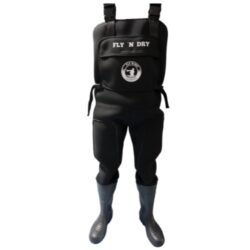 Out of stock
Out of stock
SKU: WADFD-COM-8/XL*
Fly N Dry Commercial Wader
$449.00 -
Fly N Dry Hardsole Extended Boot
$159.00 -
Fly N Dry Hardsole Wader Boot
$129.90 -
Fly N Dry Hipster Wader
$315.00 -
Fly N Dry Thigh Wader
$249.00 -
Riverworks Rise Jacket
$199.95Original price was: $199.95.$99.00Current price is: $99.00.
Final Words
Ultimately, the choice between neoprene and nylon fishing waders boils down to your specific preferences, the fishing conditions you’ll encounter, and your comfort level. Neoprene waders excel in providing insulation and durability for colder conditions, while nylon waders shine in warmer weather and offer greater mobility.
Remember that both types require proper care to ensure longevity and optimal performance. So, before you head out on your next fishing adventure, take a moment to assess your needs and make an informed decision that will keep you comfortable and protected on the water.

